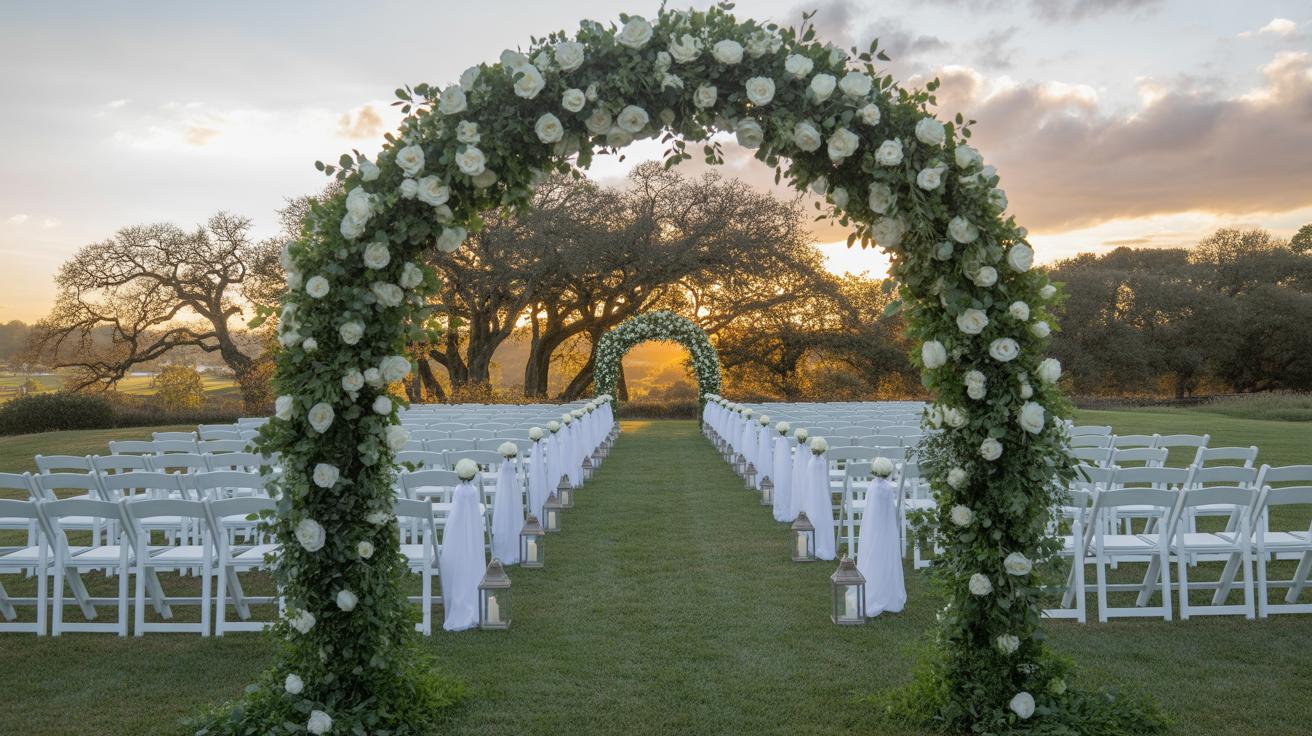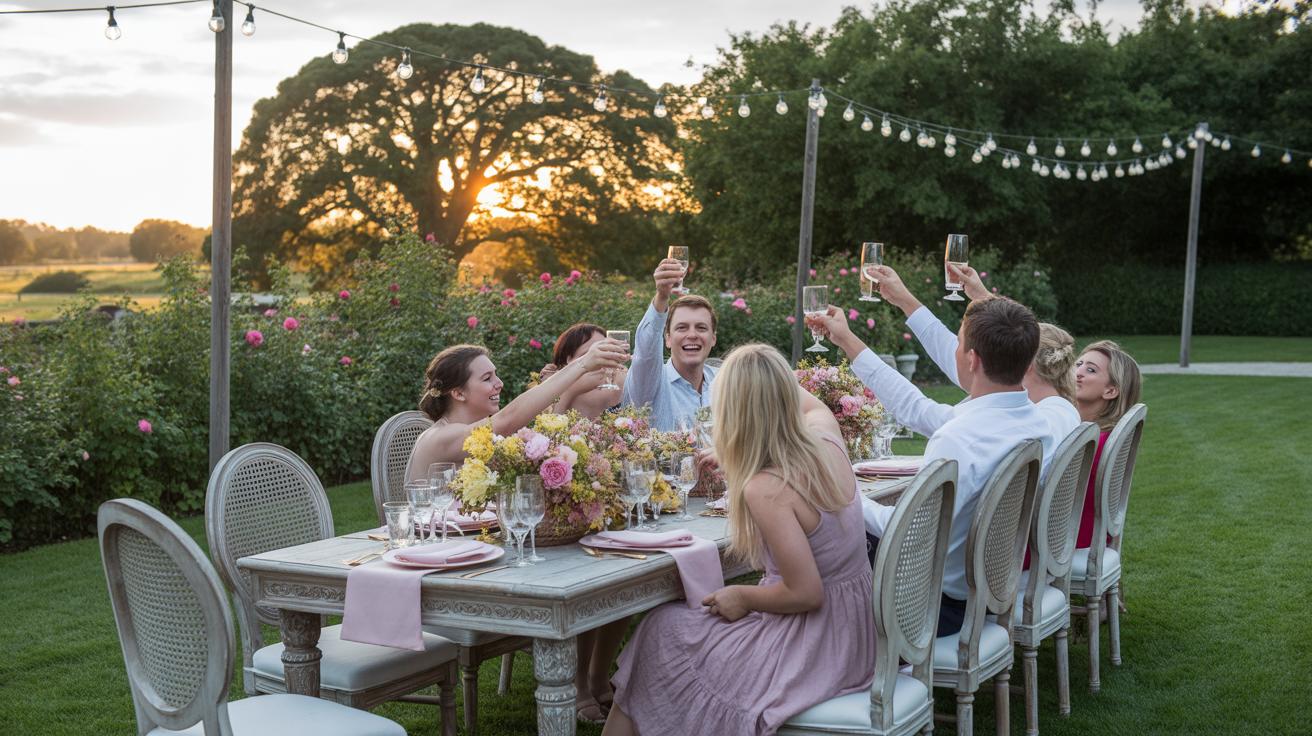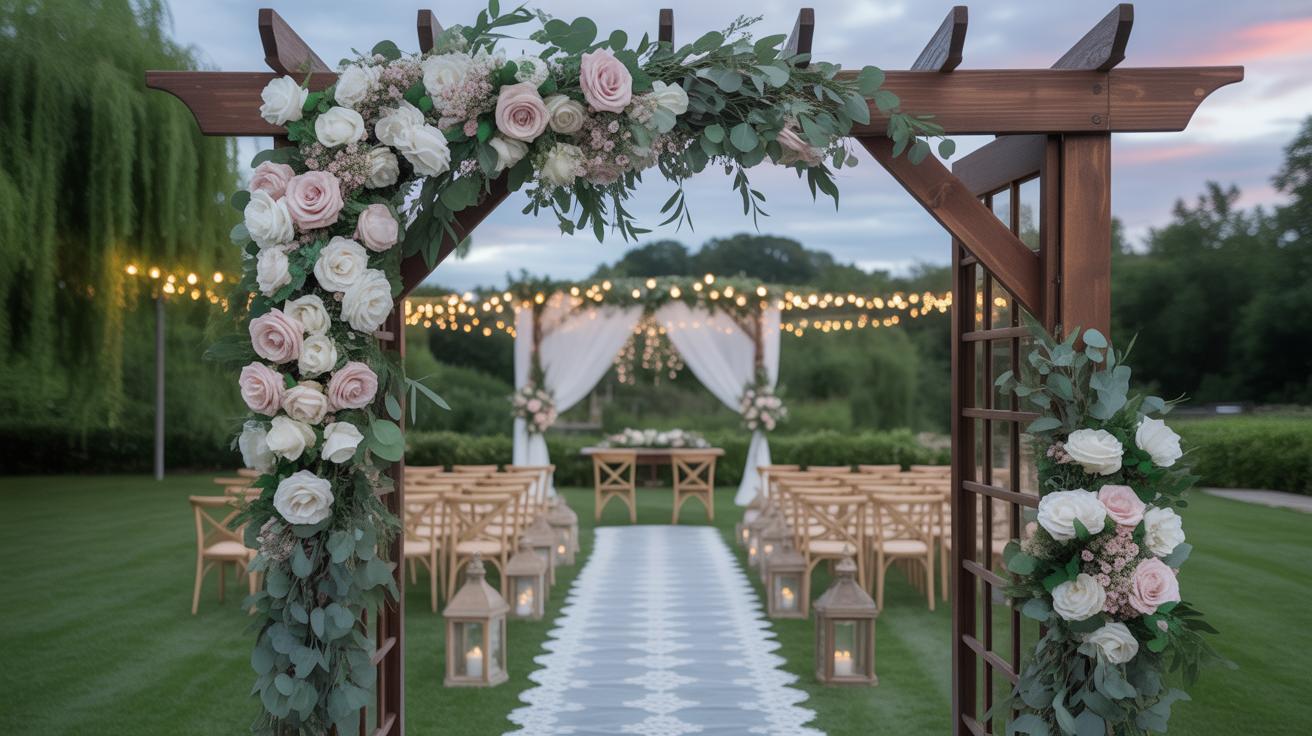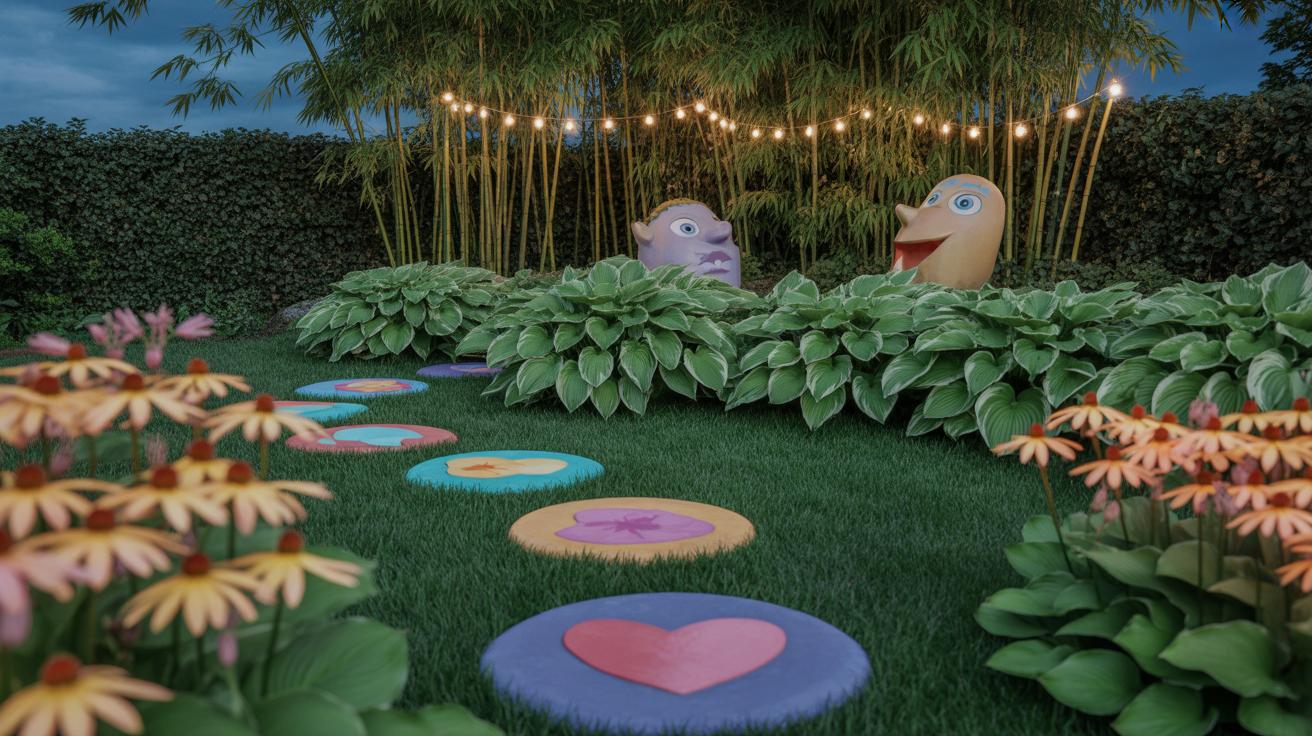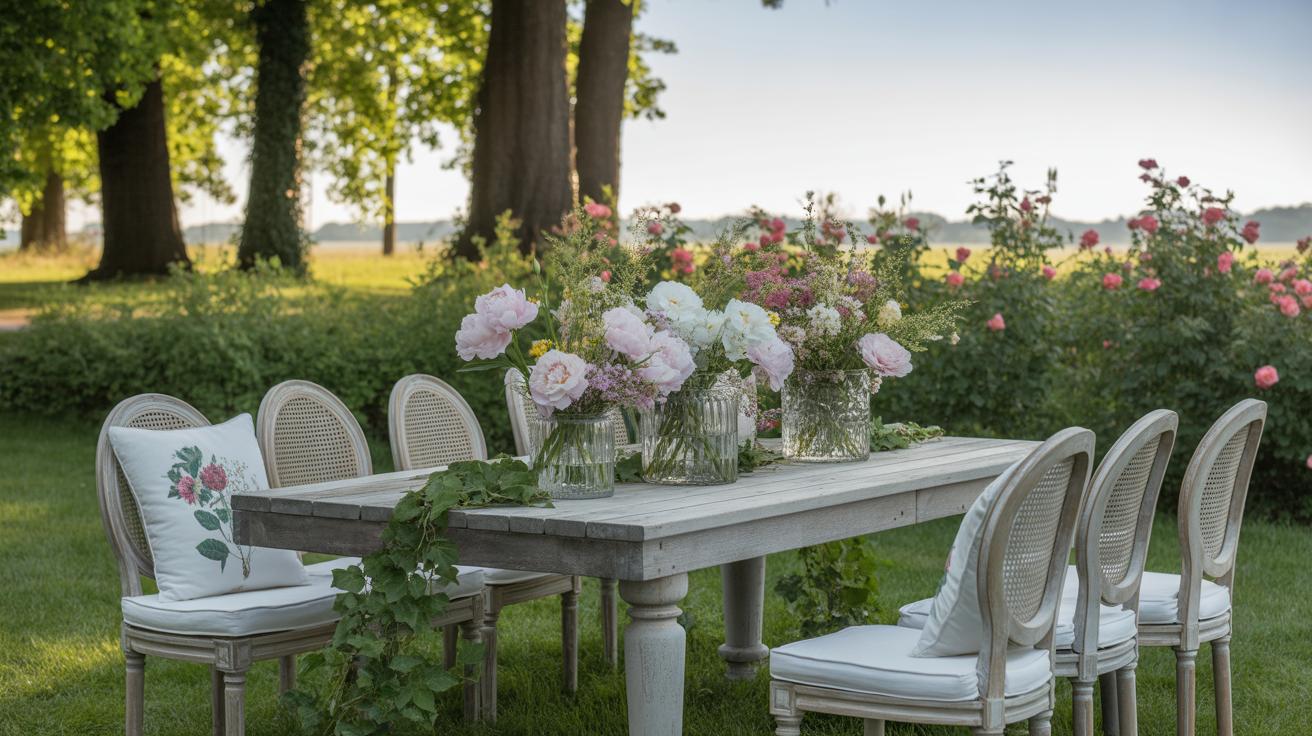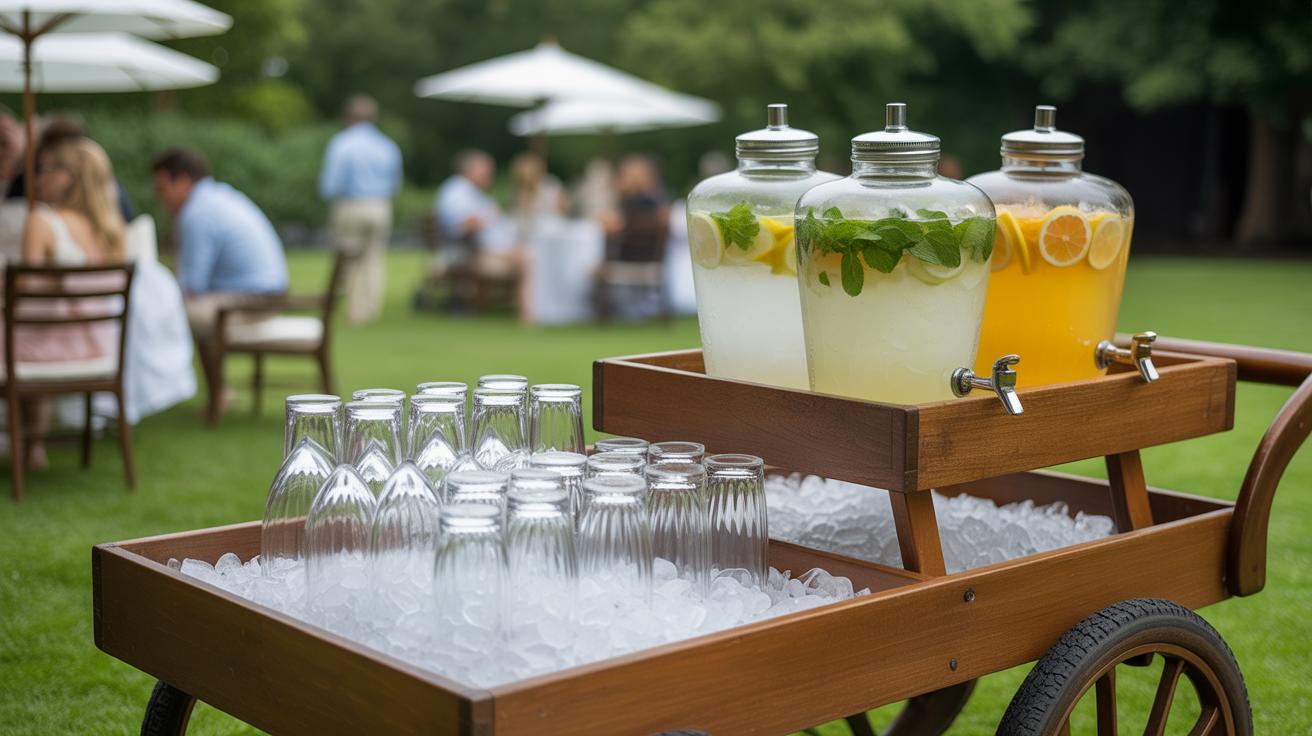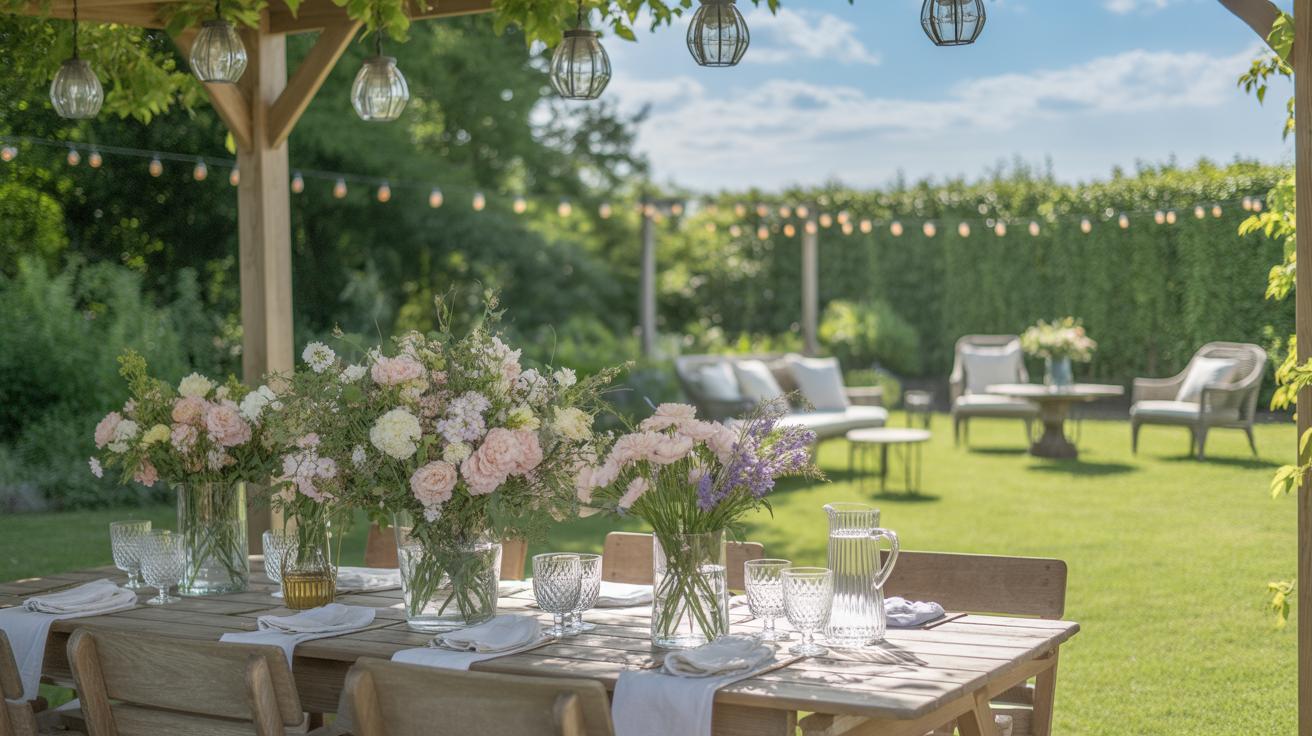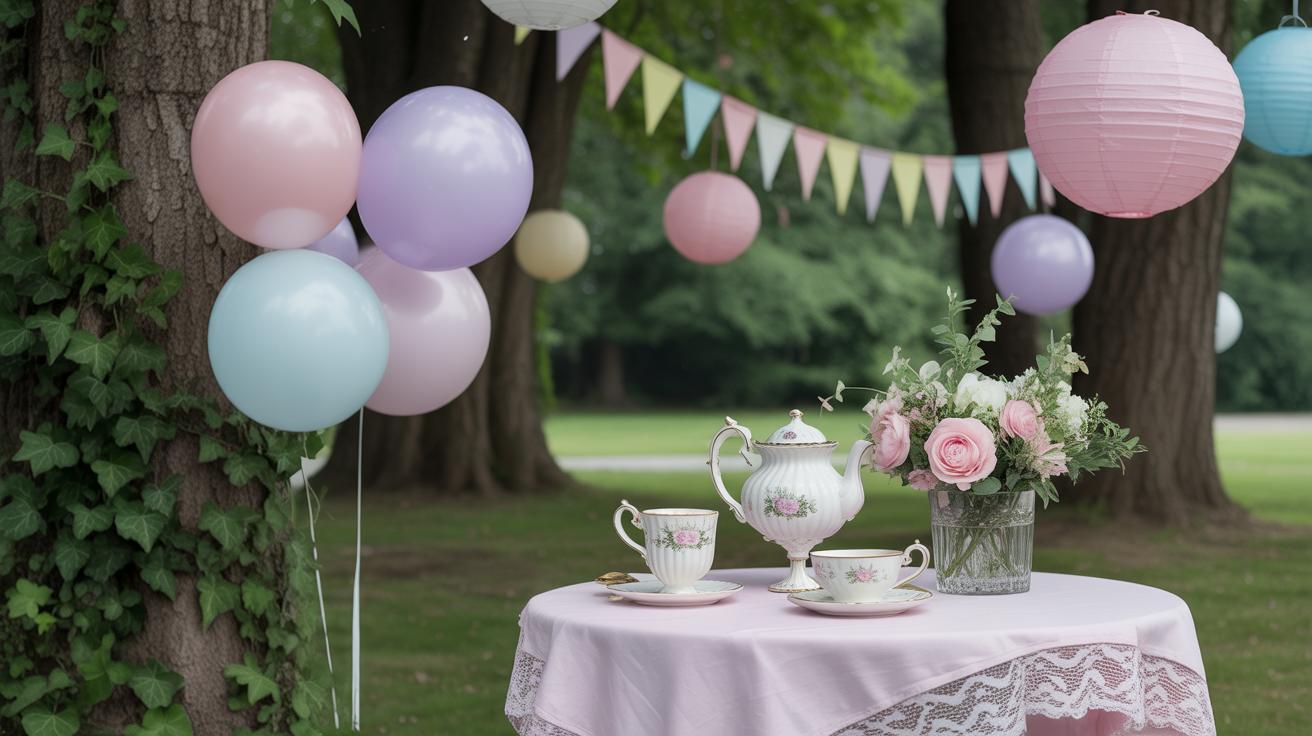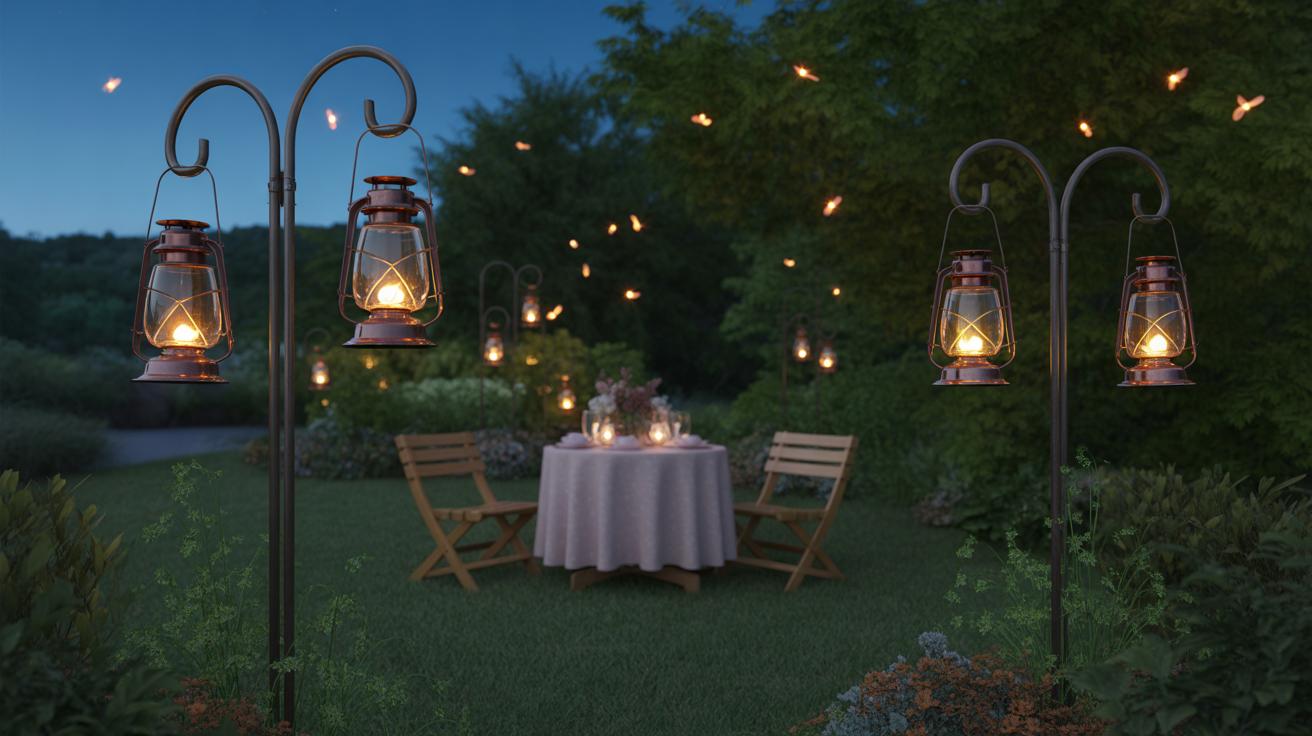Introduction
Choosing a garden for your wedding offers a natural setting filled with beauty and charm. Unique garden wedding ideas can transform your outdoor celebration into a memorable event that reflects your style and personality. This article explores various ways you can use nature, decorations, and thoughtful planning to create a special garden wedding experience.
You will find practical tips on designing your ceremony and reception, from selecting the right location within the garden to choosing décor that enhances the natural environment. Whether you seek a simple gathering or a lively party, these ideas will help you make your garden wedding unique and enjoyable for you and your guests.
Choosing the Perfect Garden Location
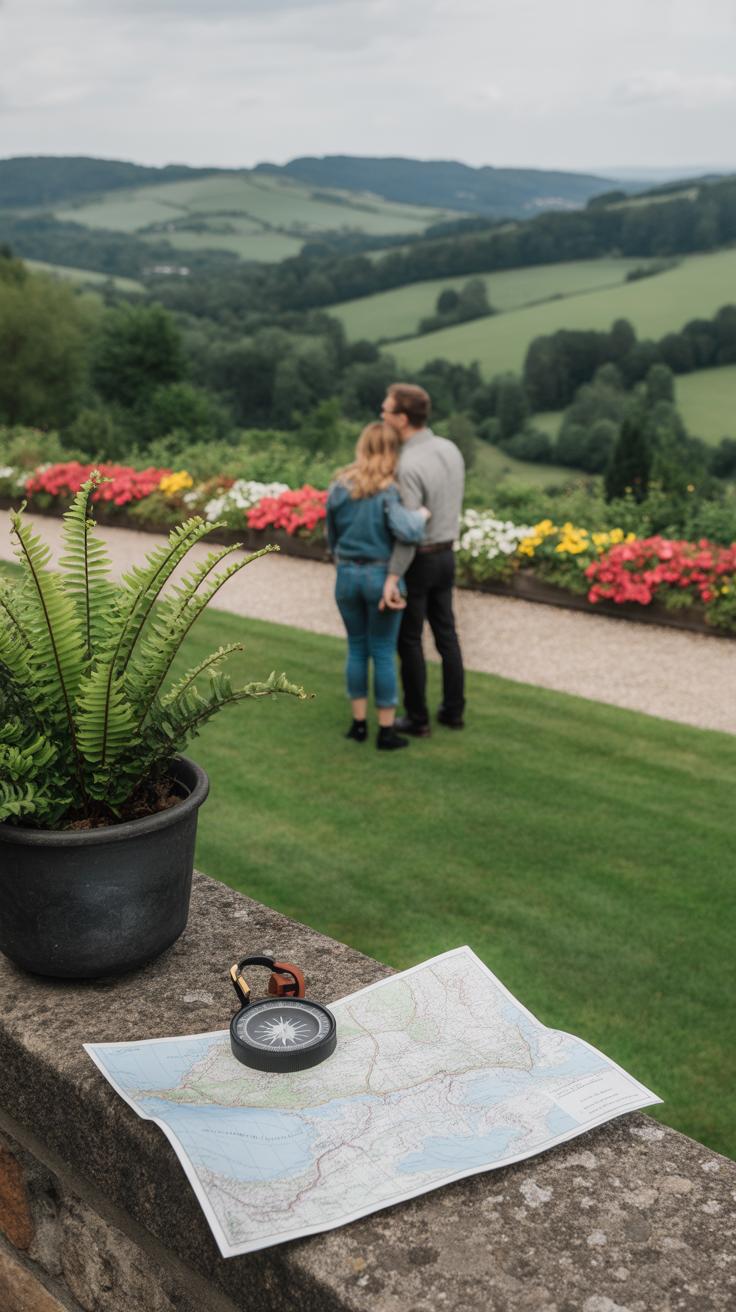
Finding the right garden for your wedding isn’t just about pretty flowers or a picturesque backdrop. You’ll want to start by thinking about size. Can the space comfortably hold your guest list without feeling cramped or, on the flip side, too empty? It’s easy to underestimate how much room tables, chairs, a ceremony area, and other activities need.
Accessibility also plays a big role. Are pathways smooth and wide enough for everyone, especially guests with mobility issues? Picture your grandparents or anyone using a cane or wheelchair trying to navigate uneven ground. That can quickly turn into a problem if it’s overlooked. A garden tucked away behind narrow roads or without nearby parking might sound charming, but it could cause headaches.
Privacy might not cross your mind right away, but it does matter. You don’t want passersby or noisy neighbors interrupting those quiet moments between you and your partner. Look for places with natural barriers — trees, hedges, or even garden walls offer a feeling of seclusion without feeling closed off.
Natural features matter too. Does the garden capture the kind of mood you want? Maybe a pond, some ancient oaks, or a wildflower patch? These details shape the vibe and photos in ways a blank lawn can’t. Yet, keep in mind that sometimes the wildest spots might require extra upkeep or more complex decoration plans to feel wedding-ready.
Assessing Space and Layout
When you’re sizing up your chosen garden, ask: what’s the flow like? Will guests easily move between the ceremony, dinner, and dancing areas? A long narrow garden might make it tricky to gather everyone close together without feeling disjointed.
Take notes: where will your caterers set up? What about restrooms? Sometimes, outdoor events stumble because basic needs weren’t fitted into the layout early on. The shape of the garden also matters. A perfectly square plot behaves differently from one that’s oddly shaped or split by paths.
It’s tempting to focus on the scenic spots but remember functional zones. For example: mixing a flower bed and seating area might look pretty, but could it cause a bottleneck? Think through your event’s timeline — and whether mingling and moving will feel natural or forced.
Considering Accessibility and Comfort
Outdoor weddings can be magical, but comfort shouldn’t be an afterthought. Ensure easy entry points, parking close by, and safe walking surfaces. You don’t want guests to struggle with thick grass or uneven gravel, especially if they’re in dress shoes or have trouble with balance.
Shade and shelter matter, too. A garden under full sun might look stunning but can become unbearable after a few hours. Consider rental tents, umbrellas, or natural coverings like trees or pergolas.
Also think about the weather’s unpredictability. Rain, wind, or temperature swings can disrupt your day if you don’t prepare. Seating options that aren’t too low, nearby rest areas, and even insect control might sound boring but deserve attention.
Making sure all guests feel included isn’t just kind, it’s smart planning. The last thing you want is some well-meaning guest struggling to participate because the garden’s layout or terrain makes it difficult. When you nail accessibility and comfort, your celebration can truly feel welcoming for everyone.
Designing the Wedding Ceremony Area
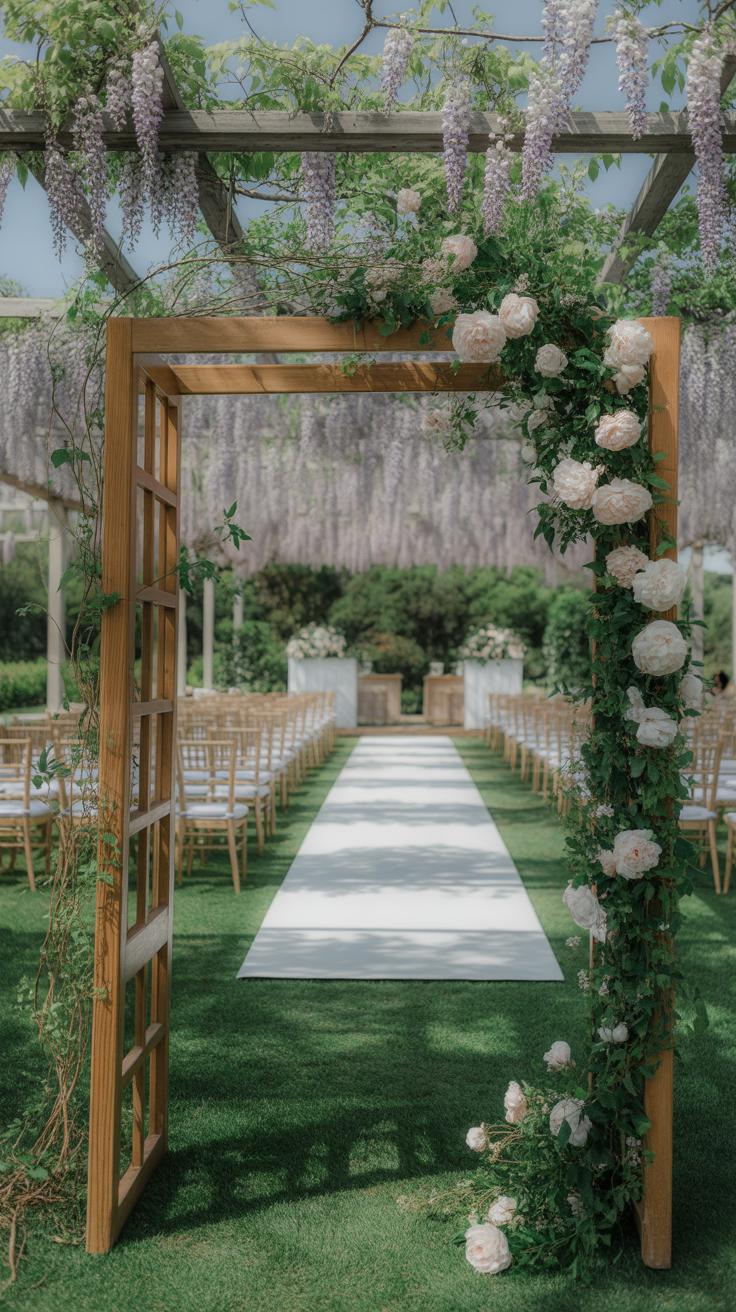
Creating the ceremony space within your garden requires a balance between form and function. You want the spot to look inviting and special but also easy to navigate and comfortable for everyone involved. Think about focal points: maybe a natural archway formed by intertwining branches or a simple clearing surrounded by tall hedges where no one feels exposed or cramped. The ground matters too—not just flat, but stable enough so guests keep their footing during the vows.
Decorating with natural elements seamlessly blends your ceremony to the garden’s charm. Consider using seasonal blooms from the very garden where you stand. Wooden benches, maybe rustic stools, or vintage chairs give a grounded and organic vibe. Draping fabrics loosely from tree branches or weaving flowers through a lattice can add softness without feeling overdone. Wrapping simple twine around aisle markers instead of ribbons makes the details feel intentional, not forced.
Seating arrangements influence how connected your guests feel to the moment. Instead of the traditional rows, explore semi-circles or gentle arcs so each person gets a fair view of you and your partner. Leave aisles wide enough for easy movement but don’t create vast empty spaces—the goal is intimacy without crowding. And don’t forget an alternate seating plan if there’s uneven terrain or obstacles; sightlines matter more than you think, especially if grandparents or those with limited mobility attend.
Creative Garden Wedding Decorations
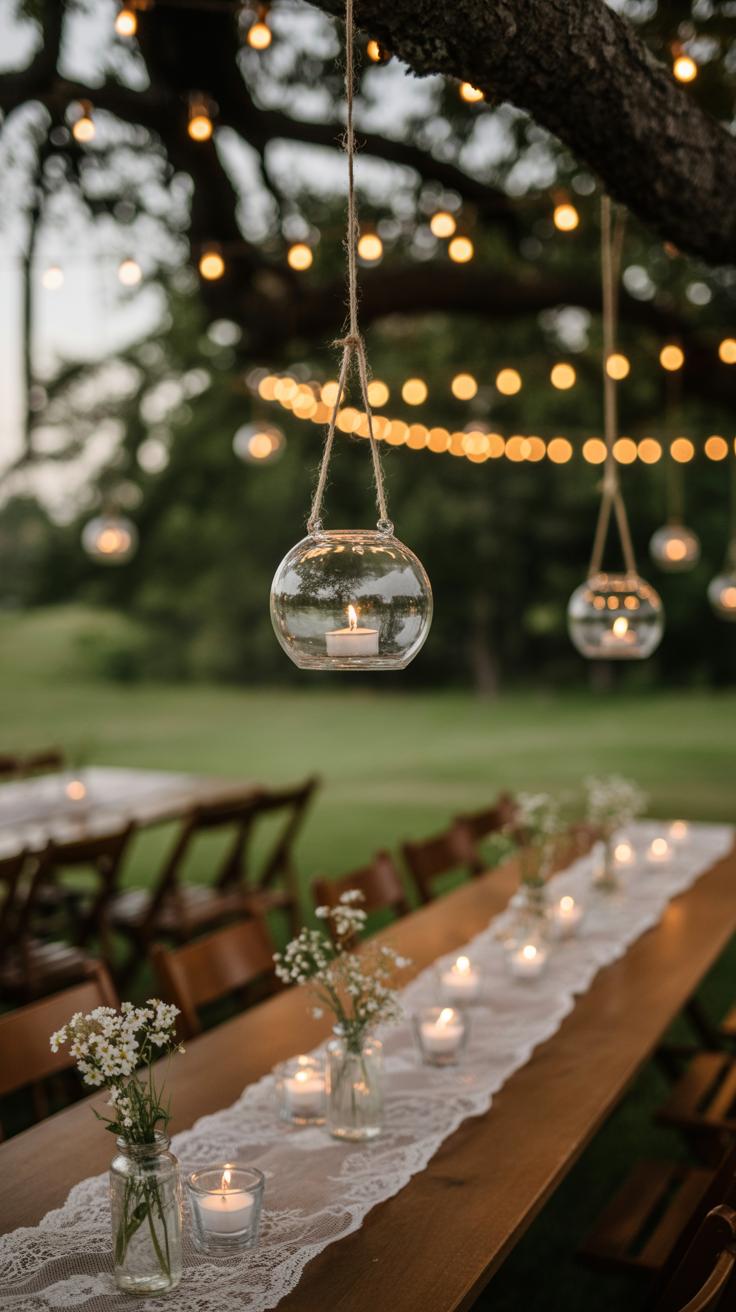
Balancing decorations to enhance your garden wedding without overshadowing its natural beauty can be a bit tricky. You want the setting to shine, not fight with overly busy decor. Think about soft, subtle touches rather than bold, statement pieces. For example, clusters of wildflowers in simple glass jars or vintage vases scattered around can gently amplify the garden’s charm.
Using natural materials like wood or burlap for table runners or signage complements the outdoor vibe without feeling out of place. Don’t hesitate to experiment with elements like hanging terrariums or whimsical paper lanterns suspended from tree branches; they add interest but remain delicate.
Using Lighting to Set the Mood
Lighting is your secret weapon for turning a garden space into something cozy and inviting, especially as daylight fades. String lights—those classic, glowing bulbs zigzagged between branches—cast a warm glow that feels intimate but not cloying. I remember attending a wedding where lanterns with candles inside were placed along the aisle; it didn’t just illuminate the path but also created a subtle rhythm that guided the guests’ eyes gently forward.
Candles, too, add a lovely flicker that blends into the evening air. You might shy away from too many candles if there’s wind, but enclosed lanterns or mason jars can shelter the flame effectively. Mixing these all can create layers of light that feel inviting but never flashy.
Incorporating Personal Touches
Adding personal elements helps the space feel theirs, not just another generic wedding setup. Handmade signs painted with the couple’s favorite quotes or directions to cocktail hour offer something charming and functional. Maybe include family heirlooms like a grandmother’s lace tablecloth or a vintage photo display; these little details invite stories and conversations among guests.
Engagement photos clipped to a string hung between two trees can also be a sweet, subtle nod to the journey. Things that show character don’t have to be perfect or polished—sometimes the ones with a bit of wear or quirkiness make the setting feel warmer and more honest.
Planning the Wedding Reception Outdoors
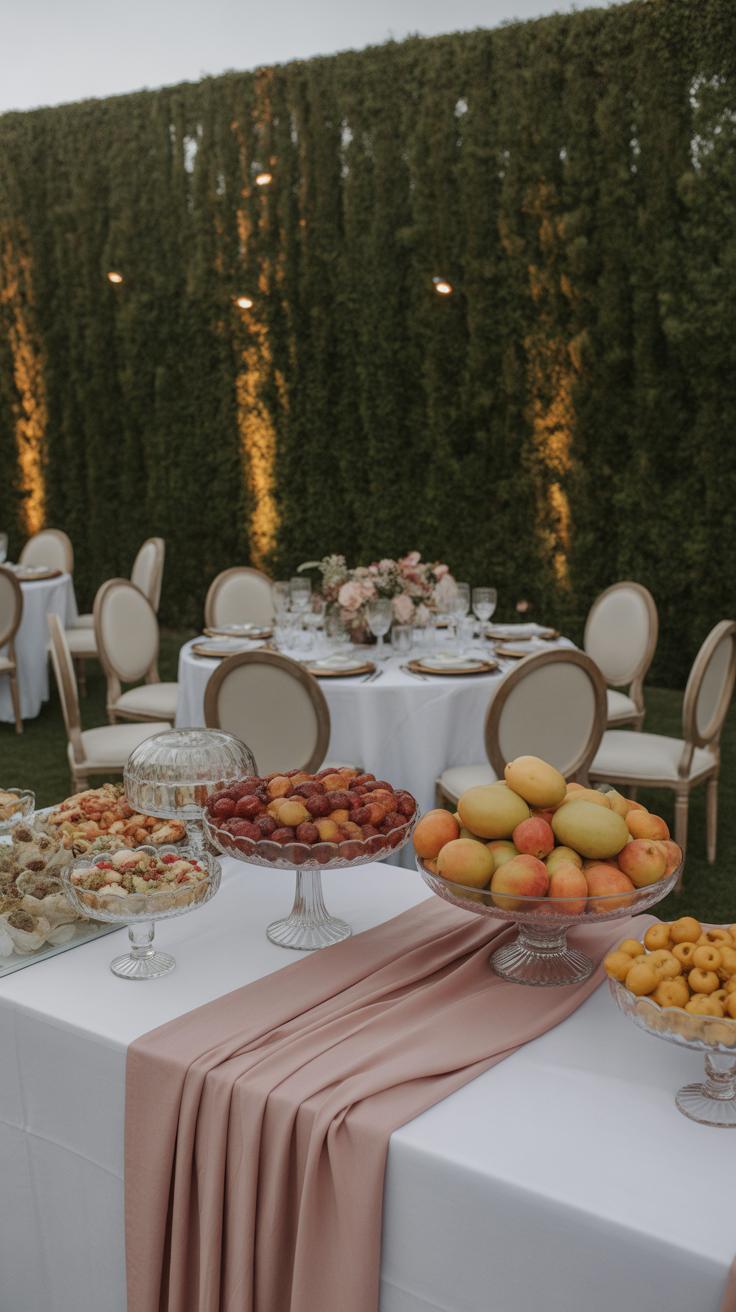
Setting Up Dining and Social Areas
Arranging your reception seating outdoors takes more thought than just placing tables under trees. You want guests to feel comfortable yet encouraged to mingle. A mix of round tables for dinners and a few lounge areas with comfy chairs or even garden benches can create natural spots for conversation. Sometimes long communal tables work well, too, especially if you want to break the traditional seating mold.
Think about access, too. Avoid blocking walkways or views of key moments like speeches or the cake cutting. And don’t forget lighting—string lights over dining and social spots add warmth once the sun sets. You might even scatter small side tables near lounge chairs so people can set down drinks or plates without hassle. Comfort helps people relax, and that usually leads to more fun. Oh, and if you have kids attending, a small play nook might be a good idea—keeping parents and children happy at the same time.
Weather Considerations and Backup Plans
Outdoor weddings always carry a bit of unpredictability because of the weather. I’ve seen perfectly planned garden receptions take a sudden hit when rain appeared out of nowhere. So, having a plan B isn’t optional—it’s essential. Renting tents or marquees can save the day, and today’s options are pretty stylish, avoiding the “event tent” feel.
Shade is just as important on hot days. Creating spots with umbrellas or fabric panels not only keeps guests cool but also protects delicate flowers or food from the sun. It’s tricky—you want a natural vibe but can’t overlook comfort. Maybe you’ll decide some heaters are necessary if it gets chilly after sunset. You can’t control the weather, but you can control how prepared you are for it.
Selecting Garden Friendly Wedding Themes
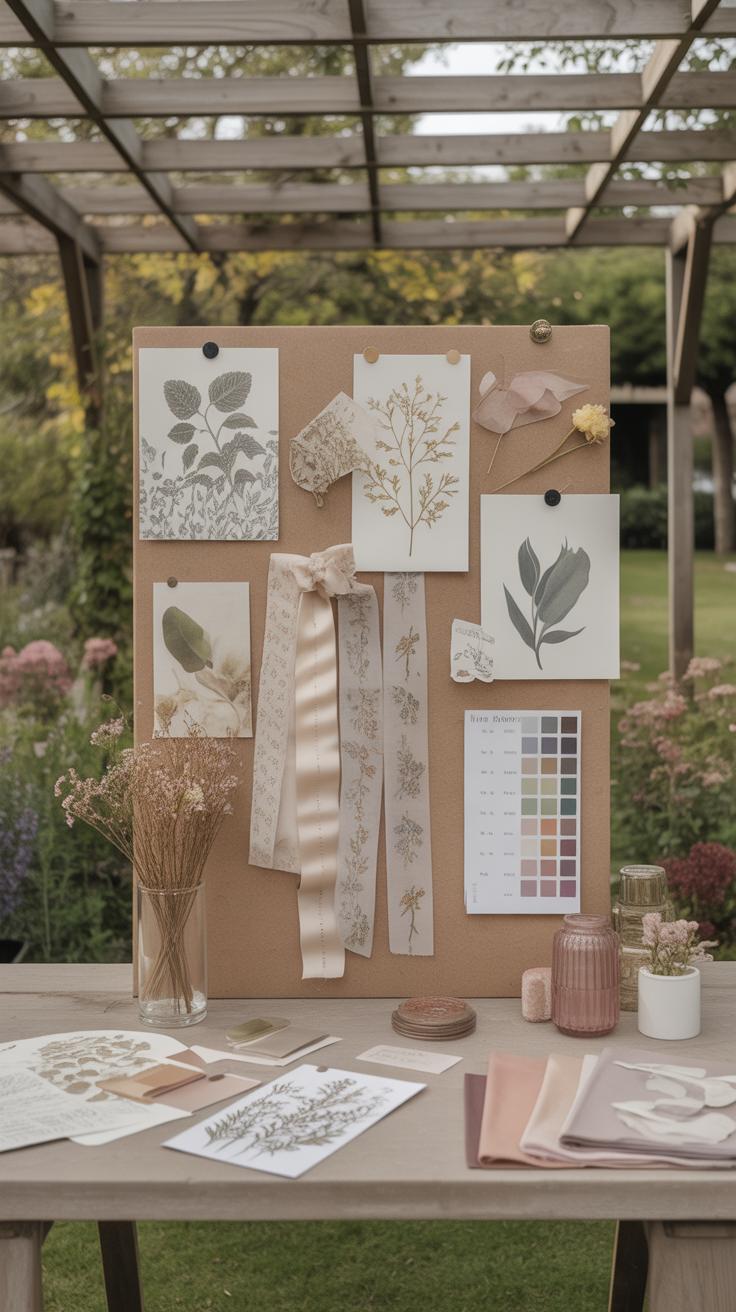
Rustic and Vintage Styles
Rustic and vintage themes have a natural connection with garden weddings. Imagine weathered wood tables, burlap runners, and lace details blending gently with the greenery around you. Using earthy tones like cream, soft greens, and muted browns can help tie your decorations to the outdoor setting in ways that feel unintentionally perfect.
You might want to bring in old mason jars, antique lanterns, or even vintage picture frames as part of your décor. These can be placed on tables, hung from trees, or used as candle holders. It works well when these decorations aren’t overdone but rather sprinkled thoughtfully around. That kind of imperfect charm makes the whole setting feel warm and inviting. It’s a style that feels comfortable, almost lived-in, which suits a garden where nature does the decorating for you.
Modern and Minimalist Approaches
On the other hand, a modern wedding theme can also work beautifully outdoors, if you lean into simplicity and clean lines. Think sleek, white chairs, geometric shapes, and minimal floral arrangements that emphasize form over abundance. This approach creates a smooth contrast with the organic feel of a garden, making each element stand out sharply.
Choosing a restrained color palette, perhaps whites and soft grays with a splash of green, helps maintain that calm, sophisticated vibe. It’s tempting to add more details, but holding back lets the space breathe and highlights the natural beauty around you. Some couples prefer this because it feels fresh and a bit unexpected for outdoor settings, even though it can be harder to pull off without looking stark.
Whether you lean toward rustic nostalgia or modern clarity, the key is to let your theme reflect your personality while allowing the garden itself to play a role in your story.
Choosing Seasonal Flowers and Plants
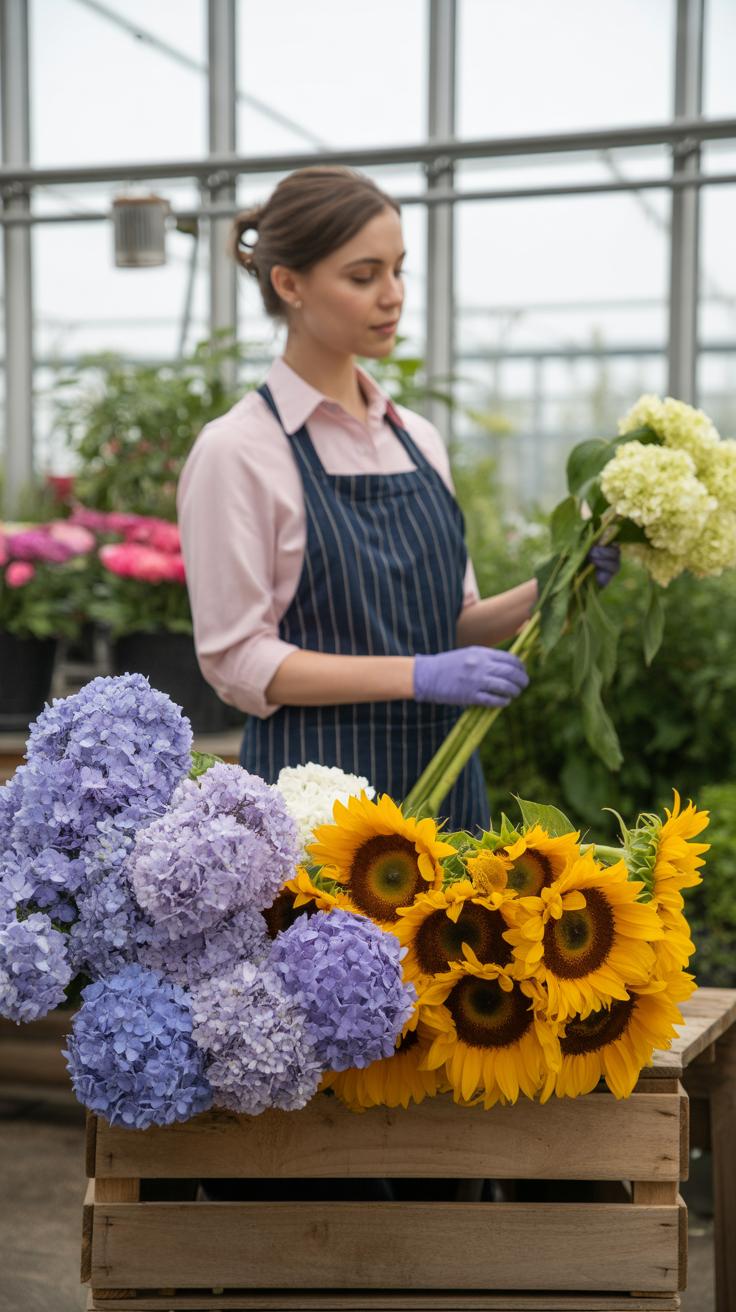
Picking flowers and plants that naturally thrive during your wedding season helps ensure your garden setting looks fresh and alive, without too much fuss. When you work with what’s already flourishing, you save time and money—and frankly, your bouquet and décor feel more authentic. It’s not just about beauty; it’s about making sure your blooms last through the ceremony and reception, which isn’t always easy if you choose something out of season.
Best Flowers for Spring and Summer
Spring and summer invite a broad palette of colors and textures. Think tulips, peonies, and daffodils for spring—their soft shades and gentle shapes bring a light, airy vibe. Summer opens up with sunflowers, dahlias, and zinnias, which are bolder and can really stand out in larger arrangements.
When arranging these, try mixing varying heights and natural greenery to keep it looking like it belongs in a garden. Loose, free-flowing bouquets suit this season well. You might want to place sunflowers or dahlias at focal points to draw attention, while softer blooms fill in the gaps.
Flowers for Fall and Winter Weddings
Cooler months ask for more resilient blooms that add warmth rather than brightness. Think about incorporating chrysanthemums, roses in darker shades, and even some evergreens or berries for texture. It’s not just about flowers—plants like eucalyptus or dusty miller add soft gray-green tones that make a difference you might not notice at first.
Using richer colors like deep reds, oranges, and purples brings a cozy touch, which is important when the garden itself might look more muted. Don’t overlook non-floral accents—pinecones or seeded branches can give a special feeling, almost like nature’s own decorations. It’s these little details that I think make fall and winter weddings feel unique and reflective of their time.
Incorporating Garden Paths and Features
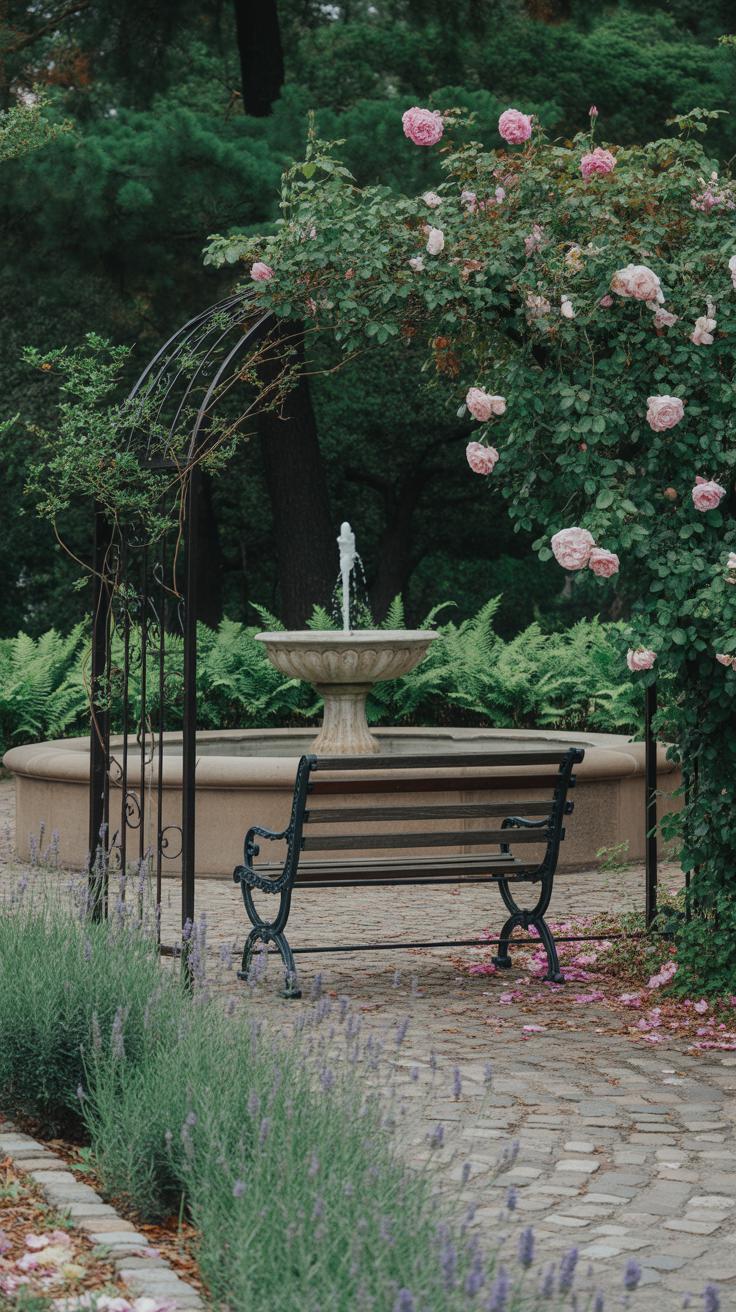
Garden paths often do more than connect spots—they set the tone for the whole day. Using these natural walkways to guide guests feels almost organic. You might string delicate fairy lights along the edges or place simple clusters of candles or lanterns to softly illuminate the route. Flowers in small pots or rustic wooden signs can subtly point the way, helping people feel grounded and less likely to wander off. The goal is to keep guests moving smoothly, but without making it feel too planned or forced.
Fountains, ponds, and sculptures can give your wedding space a kind of quiet drama. A fountain gurgling nearby can offer a calming background sound that drowns out unwanted noise, while still feeling elegant. Placing seating near a pond so guests can chat while watching water lilies or fish adds a relaxed atmosphere. Statues, even if they’re somewhat unexpected, can act as anchors for photo spots or conversation corners. It’s fascinating how these features can become silent participants in the day, giving the garden character and depth.
One idea that comes to mind is using benches not just as seating, but as cozy little breaks along the path. Drape them with soft fabrics or flower garlands to make them inviting. Guests often appreciate having subtle quiet places to reflect, away from loud music or crowds. It’s those small moments that sometimes linger longest in memory, don’t they? So, think about how every garden element might play a part, even if it’s just unnoticed background charm.
Engaging Guests with Garden Activities
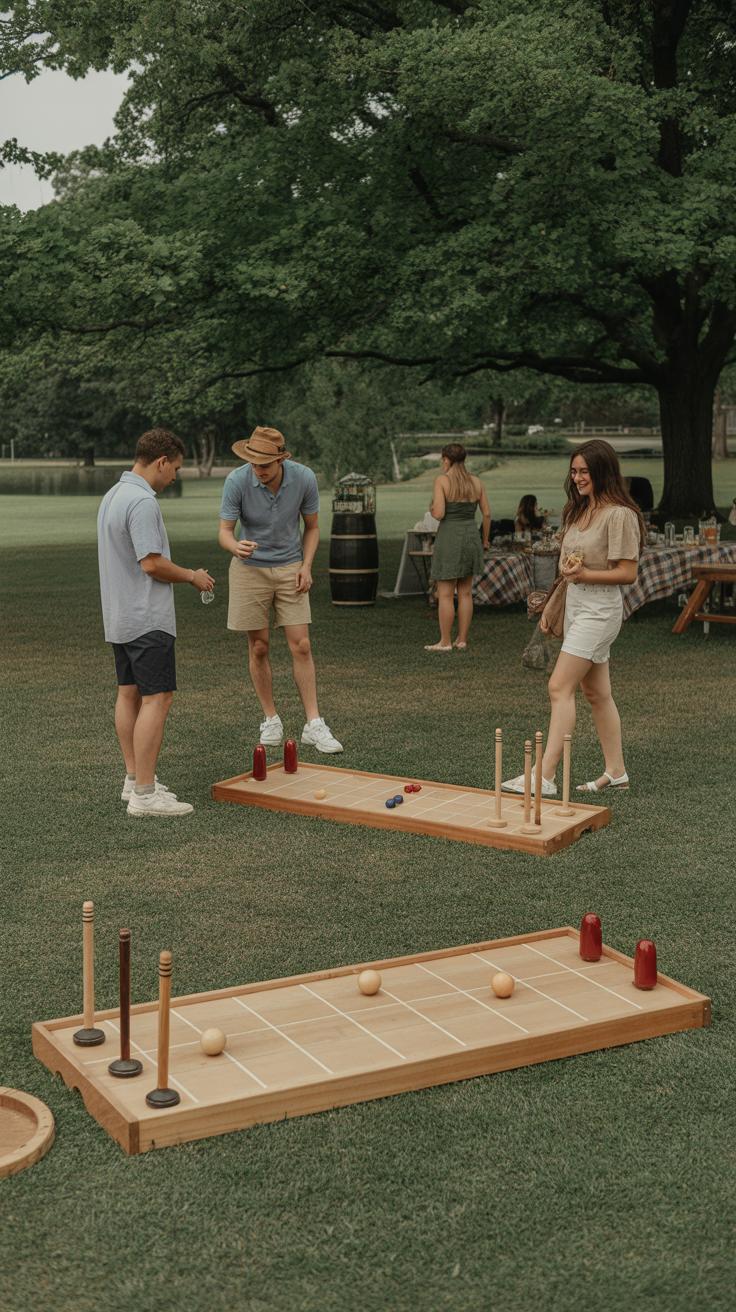
Once your guests arrive, keeping them entertained in a garden setting can turn your wedding into something memorable beyond just the ceremony. Think about simple outdoor games that can appeal to both kids and adults. Classic options like giant Jenga, croquet, or even ring toss can fit naturally into the garden atmosphere without taking up too much space. These games break the ice, invite laughter, and often lead to unexpected conversations between guests who might not know each other well.
You might want to consider adding a scavenger hunt tied to the garden’s features—perhaps clues about specific plants or hidden items around the paths or benches. It gets people moving around, appreciating the setting, and gently seeing your venue from a different angle, which can be fun.
Interactive Garden Games
Games don’t have to be complicated, really. Lawn bowling can be set up with minimal effort, or bocce ball, both are easy for most ages and don’t require much skill. Even a simple game of cornhole can offer hours of entertainment. You might find that some guests gravitate toward these activities naturally, giving quieter visitors a chance to be part of the celebration without feeling overwhelmed.
Sometimes, the unpredictability of these lighthearted games adds to the spirit of the day—it’s not about competition, but about connection. Do you see your family joining in on these? Chances are, yes. These moments often become the ones people talk about later.
Live Music and Performances
Live entertainment is a natural extension of the garden mood. A string quartet, harpist, or acoustic folk band can complement the setting without overwhelming it. Sometimes, having performers walk through the garden during cocktail hour adds a magical feel, almost like part of the scenery—except they’re real and playing music you love.
Think about the pacing too. Maybe a jazz trio between courses keeps the energy relaxed but alive. Or you could invite a local storyteller or poetry reader for a brief interlude. It sounds unusual, but it does fit well outdoors, especially if your garden holds a certain charm or history.
Choosing musicians who understand the volume and atmosphere appropriate for an outdoor wedding makes a big difference. You don’t want the music to compete with the natural sounds of the garden but rather to blend in, enhancing those little moments when your guests just pause and listen.
EcoFriendly Practices for Garden Weddings
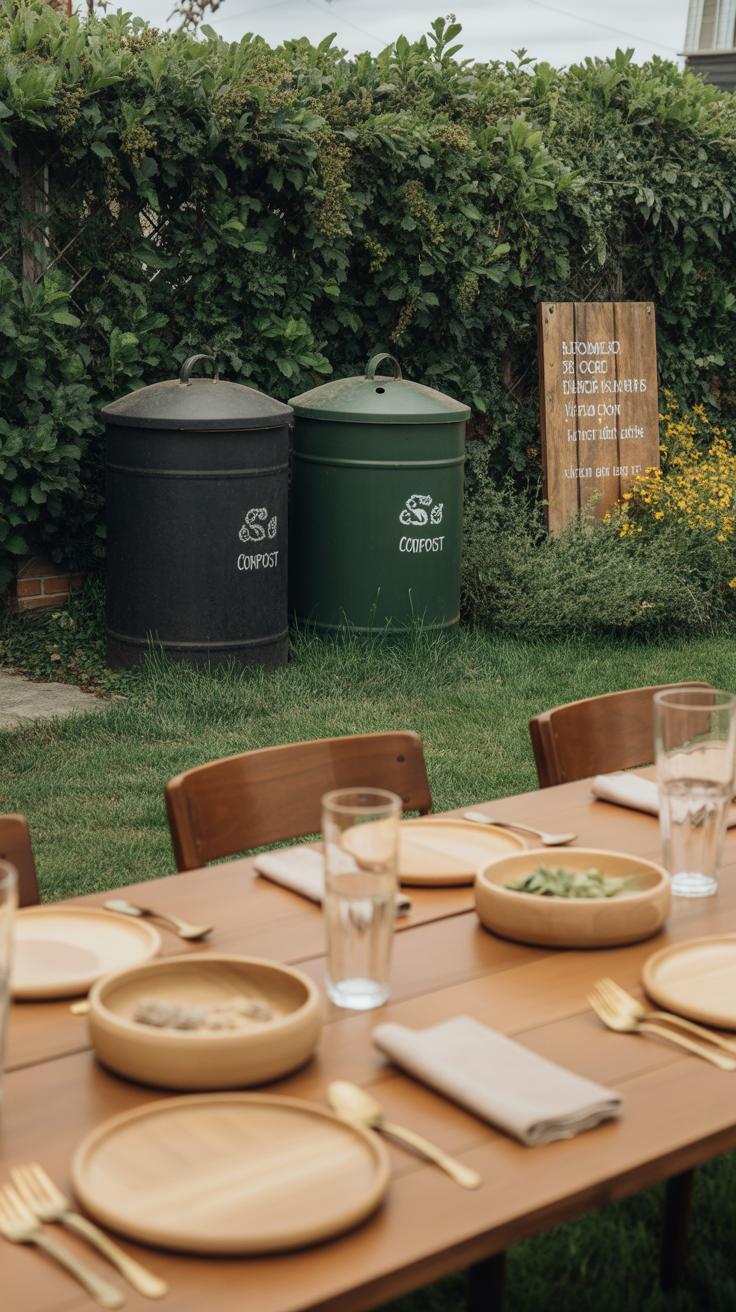
Making your garden wedding eco-conscious doesn’t have to be complicated or dull. One simple step is choosing plates, cups, and décor made from recyclable or compostable materials. Think bamboo cutlery or paper plates that break down easily. It feels good knowing the trash won’t linger for ages. You might hesitate, wondering if these options look too cheap or flimsy. But many suppliers now offer stylish, sturdy products—so don’t shy away from exploring them.
For décor, consider items you can reuse or compost afterward. Potted plants as centerpieces, for example, serve double duty and reduce waste. Also, skip single-use plastics whenever possible. Ask yourself: Is that plastic straw or balloon really necessary?
On the energy side, gardens often have natural charm, so bright floodlights aren’t needed. Solar-powered lanterns or fairy lights can create soft ambiance and save energy. They run on sunlight collected during the day, which feels… well, almost poetic in such a setting.
Try to limit electrical equipment too. Less sound gear or fewer screens means less power drained and fewer wires tripping guests. Charging stations with solar panels might require some effort, but they cut down on plug use. You could find these ideas slightly restrictive, but they push creativity in good ways.
Have you noticed how less energy and waste sometimes lead to a more relaxed vibe? Perhaps that’s why small sustainability choices matter more than they seem at first glance.
Conclusions
A garden wedding lets you combine natural beauty with your personal style. By considering the location, decorations, and flow of the event, you can create an atmosphere that welcomes everyone warmly. Pay attention to details like lighting, seating, and themes to complete the look and feel you want.
Remember that the best garden weddings are those that feel relaxed and true to you. Use these unique garden wedding ideas to guide your planning and create a celebration that you and your guests will remember fondly for years to come.


